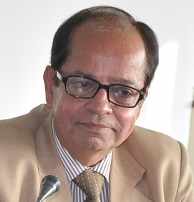 |
|
The upcoming assembly elections in Haryana present a formidable challenge for the Bharatiya Janata Party (BJP). While election-time discontent is commonplace, the scale and nature of the current unrest within the party raise significant concerns. The BJP, often lauded as a party with a distinct ideology, finds itself facing a wave of resignations and disgruntled leaders, highlighting a deep-seated dissatisfaction within its ranks.
The release of the initial candidate list, comprising 67 names, triggered a wave of resignations. Prominent figures like state ministers Ranjit Singh Chautala and Bishambhar Balmiki withdrew their support after being denied tickets. This discontent extends beyond these high-profile resignations, with senior leaders like Anil Vij and Kavita Jain, former ministers, also expressing their disappointment. The party’s decision to favor defectors from other parties over loyal, long-standing members has fueled this unrest.
The party's grassroots workers are feeling particularly disheartened. They are burdened with the responsibility of rallying support for new candidates who were once perceived as adversaries, effectively becoming the face of a party seemingly willing to compromise its principles for electoral gains. This perception has led to a decline in morale and a sense of betrayal among the party’s rank and file.
The BJP's recent performance in the Lok Sabha elections has further exacerbated these concerns. While the party fielded 110 turncoats, only 42 secured victory, resulting in a 38% success rate. This stands in stark contrast to the 54% success rate achieved by the party’s regular candidates. Furthermore, Haryana saw a significant drop in the BJP’s seat tally, halving from 10 in 2014 to 5 in 2024, accompanied by a 12% decline in vote share. Despite the party’s claims of having a robust system in place to assess ground realities, doubts persist regarding the effectiveness of their ticket distribution process.
The BJP also faces a number of other challenges. The opposition has successfully capitalized on issues like unemployment, farmer grievances, and the Agniveer scheme. While the farm laws have been withdrawn, the memories of the protracted farmers’ protests, coupled with the ongoing agitation at the Shambhu border, continue to resonate. The demand for Minimum Support Price (MSP) for 24 crops, while addressed by the state government, has failed to quell all dissent. Given the substantial Jat population within the farming community, caste dynamics play a crucial role in shaping the political landscape. The BJP, although retaining significant upper-caste support in the recent Lok Sabha elections, witnessed a decline in OBC votes, suggesting a shift towards the Congress.
The Congress has also managed to attract Dalit voters. Despite the Haryana government’s efforts to implement the Prime Minister’s initiatives, certain actions perceived as compromising the party’s core principles have led to comparisons with ordinary political parties. An overconfident approach could prove detrimental to the BJP’s electoral prospects. The forthcoming assembly elections in Haryana present a challenging scenario for the BJP, necessitating a strategic approach to address the internal unrest, effectively counter the opposition’s narratives, and regain the confidence of its grassroots workers.
